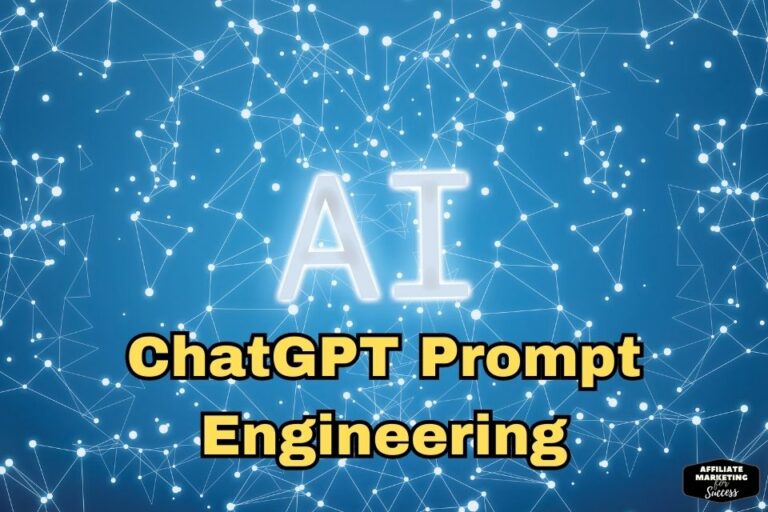ChatGPT API Guide (2025): Build Smarter AI Bots
AFFILIATE MARKETING STRATEGIES FOR SUCCESS IN 2026: YOUR COMPLETE GUIDE PROTOCOL: ACTIVE
ID: REF-2025-33976Conclusions built strictly upon verifiable data and validated research.
Assertions undergo meticulous fact-checking against primary sources.
Delivering clear, impartial, and practical insights for application.
The Chatgpt Api turns your traffic into real conversations fast. This guide shows developers, founders, and creators exactly how to build smarter bots that convert. You’ll see the latest models, pricing, workflows, and safety practices in one clean playbook. First, we fix the basics the old page missed. You get a clear setup path, examples, and stack-specific guidance that work today. Then we dive into monetization tactics, real use cases, and API optimization so your chatbot drives measurable revenue.
Key Takeaways
- Understand what the Chatgpt Api is, how it works, and who it serves.
- See the latest 2025 OpenAI models, pricing, and best-fit chatbot use cases.
- Follow a fast Chatgpt Api quick start with no-code, JS, and Python steps.
- Get runnable examples for sessions, streaming, function calling, and web embeds.
- Integrate Chatgpt Api into WordPress, Webflow, Shopify, Bubble, and modern stacks.
- Apply safety practices for API keys, PII, compliance, and responsible AI outputs.
- Optimize prompts, context, and tokens to cut costs while boosting accuracy.
- Use Chatgpt Api bots to grow leads, sales, and affiliate conversions with real flows.
What Is The Chatgpt Api In 2025 And Who Is It For?

The Chatgpt Api in 2025 is openai’s on-demand intelligence layer: a fast, safe, pay-as-you-go engine that lets developers, businesses, educators, and creators drop advanced AI into any product to answer, create, summarize, reason, and act without hiring a research team or building models from scratch.
Think of it as a dynamic thinking partner wired into your stack. It offers the latest models for text, vision, and actions, tuned for speed, cost, and safety.
With the Chatgpt Api, you create smarter chatbot systems that feel human. Not fake-friendly. Actually useful. They solve problems, learn faster, and adapt to your users in real time.
This platform is for any serious builder. Solo developer, enterprise CTO, course creator, SaaS founder, or agency hungry for edge.
Who Uses The Chatgpt Api In 2025?
- Business and enterprise: Support bots, automated sales, live analytics.
- Education: Personal tutors, grading assistants, safe research guides.
- Everyday creators: Content tools, idea engines, niche assistants.
- Advanced developer teams: Custom agents wired into internal data.
Serious teams follow strict safety practices. They control data, monitor outputs, and align models with policy. OpenAI publishes updated resources, tutorials, docs, and compliance checklists backed by independent audits.
| Use Case | What The API Delivers |
|---|---|
| AI Support Chatbot | 24/7 precise help, grounded in your docs and systems. |
| Education Assistant | Step-by-step guidance without cheating or unsafe prompts. |
| Business Automation | Summaries, reports, and actions triggered by live data. |
Want real-world builds and prompt systems? Start with dynamic examples and guides here: ChatGPT API examples and startup AI playbooks. Then explore bold ideas, test fast, and scale what works.
How Does The Openai Api Platform Offer The Latest Models For Chatbots?
The OpenAI API platform offers the latest models for chatbots by shipping new releases first, deprecating weak ones fast, and giving one endpoint for text, vision, tools, and memory so your bot stays sharper, safer, cheaper, and more useful than whatever your competitors ship next quarter.
Think of the platform as your always-on R&D lab. OpenAI’s developer teams ship frontier updates, you get them through one stable Chatgpt Api interface.
When a stronger model drops, you don’t rebuild. You switch a model name. Your chatbot upgrades in minutes, not months.
How the platform offers the latest models without chaos
Openai’s platform offers versioned models, clear deprecation dates, and migration guides. That’s how serious business and enterprise teams ship fast without burning weekends.
Safety isn’t an afterthought. The stack bakes in system-level safety practices, abuse monitoring, and policy tuning so you can scale without PR fires.
| Model Tier | Best For | Why It Wins in 2025+ |
|---|---|---|
| Everyday | Support, FAQs, education | Cheap, fast, safe by default |
| Advanced | Agents, tools, complex problems | Handles context, actions, reasoning |
Use dynamic examples from openai’s resources, tutorials, docs, and starter repos to create bots that explore ideas, solve problems, learn faster. The same stack serves education apps, internal copilots, and customer chatbots.
If you’re serious, study real builds: ChatGPT API playbooks and advanced model breakdowns. Early adopters already cut handle time and churn; published 2024–2025 case studies show double-digit gains.
Simple rule: ship on the OpenAI API platform, and your chatbot never falls behind the models that run the internet.
Can I Use ChatGPT As An API To Power My Website Or App?

Yes. You can use the Chatgpt Api to power any website or app with fast, safe, context-aware AI features that scale. OpenAI’s latest models plug in through simple HTTPS calls, so your product feels smarter without rebuilding your stack or hiring a full in-house machine learning team.
Think of the API as your always-on expert. It turns plain text requests into answers, actions, and dynamic content your users actually care about.
Openai’s platform offers unified access to the latest models for chat, vision, embeddings, and tools. That means one integration, then endless chatbot, search, and automation use cases across business, enterprise, and education.
What You Can Build With ChatGPT API
By 2025, the winning apps do three things well: personalize, respond fast, and stay safe. The Chatgpt Api helps you do all three without bloat.
- Smart support chatbot that cuts tickets and boosts retention.
- AI tutor to help students learn faster with step-by-step guides.
- Product advisor that suggests offers and solves problems live.
- Internal tools that draft content, summarize docs, and reduce grunt work.
Key Safety Practices And Architecture
Don’t ship blind. Openai’s safety practices include abuse monitoring, strict policies, and enterprise-grade security. You control prompts, rate limits, and data retention to align with your brand and compliance.
| Goal | API Use |
|---|---|
| Higher conversions | On-site chatbot and dynamic recommendations. |
| Faster workflows | Automated replies, drafts, and research assistants. |
| Better decisions | Summaries of complex docs, examples, and insights. |
Want implementation shortcuts, prompts, and tested flows? See our full ChatGPT API implementation guide and startup success examples built by top openai’s developer teams.
How Do I Create An OpenAI Account And Generate A Secure API Key?
Sign up at OpenAI, verify your email, add billing, then create one secret key per project from the API Keys page. Store it in a secure vault, never in public code. Rotate keys often, monitor usage, and enforce least-privilege settings for safe ChatGPT API integration.
Start at platform.openai.com with your work email. Use a domain you control if you’re building for business, enterprise, or education. That signals you’re serious.
Once signed in, confirm your email and phone. Add a payment method so you can hit the latest models at real production scale in 2025, not just toy requests.
Create your OpenAI API key the right way
Go to Settings → API keys → “Create new secret key.” Name it by project: “billing-chatbot-2025,” “internal-agent,” “education-app.” One key. One purpose.
You’ll see it once. Copy it straight into a secrets manager. 1Password, Vault, AWS Secrets Manager. Anywhere except a screenshot or Slack.
| Do | Don’t |
|---|---|
| Store in env vars | Hard-code in GitHub |
| Rotate every 60-90 days | Share keys across teams |
| Set usage limits | Post keys in screenshots |
Non-negotiable safety practices for 2025 builders
Protect keys like production passwords. Enable org-level controls in OpenAI’s dashboard. Track usage per key so you can spot abuse fast.
Follow OpenAI’s security guides, resources, tutorials, docs, and dynamic examples. Study these ChatGPT API best practices for real builds that solve problems, support everyday users, and push advanced ideas.
Elite developer rule: if a junior can see the key, an attacker can too.
Use environment configs per platform, rotate keys on leaks, and respect openai’s policies. That’s how you create secure ChatGPT API access that scales with your product, not your risk.
How Do I Send My First Chatgpt Api Request In JavaScript, Python, And No-Code?

Here’s the fast path: grab your OpenAI API key, pick the latest ChatGPT API model, send a simple POST request with a message, log the response, then lock in safety practices like key security and rate limits before you ship anything to real users.
Step 1: Core setup for all platforms
Create an OpenAI account, then generate a secret key inside the platform settings. Treat it like money.
Use HTTPS only. Never expose keys in client code. Follow OpenAI’s 2025 safety practices as your default standard.
JavaScript: one message, one response
Install the official SDK: npm install openai. Then:
import OpenAI from "openai";
const client = new OpenAI({ apiKey: process.env.OPENAI_API_KEY });
const reply = await client.chat.completions.create({
model: "gpt-4.1-mini",
messages: [{ role: "user", content: "Say hi in 10 words." }]
});
console.log(reply.choices[0].message.content);Python: backend-ready in seconds
Install with pip install openai. Then:
from openai import OpenAI
client = OpenAI()
chat = client.chat.completions.create(
model="gpt-4.1-mini",
messages=[{"role": "user", "content": "Say hi in 10 words."}]
)
print(chat.choices[0].message.content)No-code: results without writing code
Use Make, Zapier, or n8n. Add an HTTP module calling the ChatGPT API endpoint with your key in headers.
Pass fields from your CRM or chatbot into the prompt, then send results back to email, Slack, or your site.
| Use Case | Best Fit |
|---|---|
| Business / enterprise chatbot | Backend Python or JS |
| Education and everyday helpers | No-code workflows |
Want dynamic examples and advanced ideas? See our full ChatGPT API guides and hands-on tutorials and docs. All samples reflect openai’s latest models and are battle-tested by serious developer teams.
How Can I Build A High-Converting Chatbot For Affiliate, Business, And Education Use?
You build a high-converting chatbot by pairing the Chatgpt Api with clear intent, sharp targeting, strict safety practices, and relentless iteration based on real user data. One bot. Three tracks: affiliate revenue, business pipelines, and education outcomes. Each with specific prompts, flows, and proof-driven offers.
Step 1: Define one brutal, specific mission
Stop chasing “smart.” Chase outcomes. Pick one mission per chatbot. For example: qualify leads, grow email lists, close affiliate offers, or guide students to the right resource in under 60 seconds.
When the mission’s clear, every message cuts fluff. That’s how you win.
Step 2: Use the latest models for context and clarity
Connect your platform to the latest Chatgpt Api models through openai’s official docs and tutorials. Use dynamic system prompts that fix tone, audience, and brand rules. Reference openai resources, guides, and examples so your developer never guesses.
Fast responses, clear answers, zero confusion. That’s conversion fuel.
Step 3: Design high-converting flows by use case
| Use Case | Core Flow | Key Metric |
|---|---|---|
| Affiliate | Audit needs → show 1-3 tailored offers → CTA | Click-through to offer |
| Business | Qualify → capture email/phone → book call | Leads booked |
| Education | Assess level → micro-lessons → track progress | Completion rate |
Step 4: Protect trust with safety and proof
Hardcode safety rules: no medical, legal, or financial claims without disclaimers. Cite sources, link to real data, and log chats. High-converting bots reduce risk.
Embed tools like commission calculator or curated education content to help people solve problems, learn faster, and act now.
The highest-converting chatbot in 2025 is simple, honest, and obsessed with one measurable result.
How Do I Integrate The Chatgpt Api With WordPress, Webflow, Shopify, Bubble, React, And Next.js?
You integrate the ChatGPT API into WordPress, Webflow, Shopify, Bubble, React, and Next.js by connecting secure server-side routes to OpenAI’s latest models, then exposing simple UI components or plugins that send user prompts, handle responses, enforce safety practices, and cache results for speed and lower costs.
Step 1: One secure backend for every platform
Start with one API route that calls the Chatgpt Api using openai’s latest models. Keep your key server-side only. No excuses, no keys in public code.
Use rate limits and abuse filters. That’s non-negotiable for business, enterprise, and education use.
Step 2: Platform-specific integration patterns
| Platform | How to connect |
|---|---|
| WordPress | Create a custom plugin or theme file calling your backend route. |
| Webflow | Use forms + Webflow Logic or a serverless hook to your route. |
| Shopify | Build an app proxy that forwards requests securely. |
| Bubble | Use the API Connector plugin with a backend workflow. |
| React / Next.js | Call via API routes; stream responses for dynamic chatbots. |
Step 3: Safety, speed, and smarter experiences
Design each chatbot for everyday and advanced problems. Scope prompts tightly. Log only what you need. That’s how you protect users.
Pull ideas, solve complex problems, help people learn faster. Combine OpenAI resources, tutorials, docs, and your own ChatGPT API guides for continuous improvement.
Elite teams test outputs, add guardrails, and ship specific dynamic examples per platform. That’s how they win 2025, not with generic widgets.
Want practical build-throughs and AI growth plays? Scan our startup success with ChatGPT and related openai developer content; it offers focused implementations that actually ship.
How Do I Apply Safety Best Practices, Data Privacy, And Compliance With The Chatgpt Api?

You apply safety best practices, data privacy, and compliance with the Chatgpt Api by designing for minimal data collection, strict access controls, regional storage, auditable logs, and continuous monitoring against abuse, aligned with OpenAI policy, GDPR/CCPA, education and enterprise rules, and your own internal governance.
Here’s the rule: treat every prompt like it’s sensitive. Even when it’s not. That mindset keeps your platform defensible when regulators, investors, or parents start asking hard questions.
First, data privacy. Don’t send secrets you don’t need. Mask PII before it touches openai’s models. Rotate keys. Lock outputs behind role-based access.
For 2025-grade safety, build three guardrails. Input filters for prompts, output filters for responses, and audit logs for both. Use the Chatgpt Api policies and safety practices as your baseline, not your ceiling.
Non‑Negotiables For Serious Builders
- Data stays encrypted in transit and at rest.
- Region-aware storage for EU, US, and education users.
- Abuse monitoring for self-harm, hate, scams, and misinformation.
Your chatbot should refuse harmful requests by design. Use dynamic policies that adapt as openai’s latest models and guides update.
| Use Case | Key Control | Standard |
|---|---|---|
| Business / enterprise | DPIAs, DLP, vendor reviews | GDPR, SOC2, ISO 27001 |
| Education | Student data minimization | FERPA-style rules |
| Everyday / advanced apps | User consent and opt-outs | CCPA/CPRA |
Want proof you’re serious? Publish a clear AI use policy, link to openai resources, tutorials, docs, and show real examples of how you solve problems, learn faster, and protect users. Then send readers to our full ChatGPT API breakdown or AI safety tooling for next steps.
How Is Chatgpt Api Priced In 2025 And How Do I Reduce Token Costs?
The Chatgpt Api in 2025 is priced per token, with cheaper lightweight models and higher rates for advanced models; you reduce costs by sending shorter prompts, caching responses, sharing context across turns, batching requests, and aligning model choice with real business value instead of vanity complexity.
OpenAI’s latest models bill on input and output tokens. Think tiny word chunks, not requests.
Pick the smallest model that still hits your outcome. That’s where most teams win.
Core 2025 Pricing Reality Check
OpenAI’s platform offers tiered rates for general, vision, and reasoning models. Pricing is transparent and updated in their official docs.
Enterprise, education, and high-volume chatbot workloads get custom terms. Strong safety practices, SLAs, and data controls are now standard.
| Strategy | Estimated Savings |
|---|---|
| Slim prompts and system messages | 20-40% fewer tokens |
| Right-size models per endpoint | 15-35% cost cut |
| Response caching and reuse | 10-30% savings |
How Elite Teams Cut Token Burn
Send facts once. Use IDs, not full blobs of text. Truncate history.
Stream responses so your developer team stops early when users are done. Shorter outputs equal smaller bills.
- Use structured tools and functions instead of open essay answers.
- Route simple requests to cheaper models; save advanced models for hard problems.
- Cache dynamic examples for FAQs and repeat prompts.
Smart businesses create guardrails that solve problems, learn faster, and protect safety. They track tokens per feature weekly, then kill waste.
For practical builds, check OpenAI’s tutorials, docs, and detailed ChatGPT API guide. For content and SEO workflows, pair this with our keyword strategy systems. This is how you keep power high and token costs low.
How Do I Use Prompt Engineering, Context Management, And Function Calling For Smarter Bots?

You use sharp prompt engineering, tight context management, and precise function calling so your ChatGPT API chatbot thinks clearly, acts fast, and never hallucinates critical steps. Together, they turn vague user input into safe, consistent, production-grade decisions for business, enterprise, education, and everyday advanced workflows.
Prompt Engineering: Treat Prompts Like Product Specs
Stop chatting. Start scripting. Great bots follow strict instructions, roles, and constraints.
Define persona, goal, style, format, safety, and failure rules. Reference openai’s latest models and docs so prompts stay aligned with verified practices, not guesswork.
- System: who it is, what it must always do.
- User: plain request, no fluff.
- Assistant: structured examples that show ideal responses.
Context Management: Feed It Signal, Not Noise
By 2025, smart bots stream dynamic context from your platform, CRM, or product database. Weak bots repeat questions.
Use embeddings plus a context window budget. Pull only the top-ranked snippets so the model sees fresh, exact facts before it answers.
| Technique | What It Does |
|---|---|
| Embeddings Search | Finds relevant data fast for each query. |
| Short-Term Memory | Keeps key chat history, drops noise. |
| Policies Layer | Applies safety practices and compliance rules. |
Function Calling: Turn Answers Into Actions
Function calling lets your bot run code, not just talk smart.
Define strict schemas for “book_meeting,” “get_order_status,” or “generate_affiliate_report,” then let the model choose and call them. Log calls for audits, testing, and AI detection checks using tools from your internal toolkit or detailed ChatGPT API guides.
How Do I Compare The Chatgpt Api Vs Hosted Chatbot Tools For My Business?
Use the ChatGPT API when you want control, custom logic, and scale; pick hosted chatbot tools when you need speed, templates, and guardrails. The right choice depends on your data sensitivity, traffic volume, budget, internal skills, and how “mission-critical” your chatbot is to revenue.
Here’s the hard truth: if the chatbot touches money, own it. The ChatGPT API gives you direct access to openai’s latest models with higher reliability and custom workflows.
Hosted tools fit you if you’re small, non-technical, or testing. They’re great for everyday FAQs, lead gen forms, and simple support flows.
Key differences that actually matter in 2025
| Factor | ChatGPT API | Hosted Chatbot Platform |
|---|---|---|
| Speed to launch | Days with a strong developer | Hours with templates |
| Control | Full logic, data, brand voice | Limited, tied to vendor |
| Scalability | High; pay per usage | Tiered; can spike costs |
| Compliance & safety | Custom governance, strict practices | Pre-baked policies |
A fast decision framework for your business
- Use ChatGPT API for enterprise support, complex workflows, and deep integrations.
- Use hosted tools for prototypes, education projects, and lightweight support.
- Hybrid: validate with a platform, then migrate to API as volume grows.
Ground your choice in numbers. Model projected traffic, support deflection, and revenue impact; then compare true cost-of-delay vs a proper API build. Recent 2025 case studies show custom API bots cutting support costs 25-40% while boosting CSAT.
Want dynamic examples and guides? Study openai’s docs, official tutorials, and real builds via our ChatGPT API resources. Then compare against your existing chatbot stack and growth ideas that solve real problems.
How Can I Use Chatgpt Api Chatbots To Increase Affiliate Conversions And Sales Funnels?
You use ChatGPT API chatbots to qualify traffic, personalize offers in real time, crush friction, and move visitors faster through every funnel step so more users click, opt in, and buy while your costs drop and your ROI scales past what static affiliate pages can do.
Here’s the truth: your funnel doesn’t need more traffic. It needs smarter, faster decisions for each visitor. That’s where a ChatGPT API-powered chatbot prints money.
It reads behavior, matches intent, and recommends the exact affiliate offer. No guesswork. No dead clicks. Think of it as your 24/7 sales closer that never forgets a product detail.
Design Chatbots That Sell, Not Chat
Use openai’s latest models to create dynamic scripts that segment users in three messages. Ask budget, experience, and goal. Then route to laser-targeted offers, tailored bonuses, or deep funnel content that builds trust fast.
Embed that chatbot across your platform: blog posts, tools, comparison pages, even email sequences. It turns everyday questions into tracked clicks, trials, and high-ticket calls.
| Funnel Stage | ChatGPT API Chatbot Role |
|---|---|
| Cold Click | Explain benefits, show 1-2 best-fit offers. |
| Consideration | Answer objections with evidence, current reviews, and case snippets. |
| Checkout | Rescue carts, suggest bonuses, calculate commissions. |
Safety, Trust, And Proof That It Works
Follow strict safety practices: clear disclosures, compliant wording, and honest recommendations. Link to trusted guides, tutorials, docs, and independent resources. That signal matters in 2025, especially for business, enterprise, and education buyers.
Top affiliates report 15-35% lift in conversions when AI chat assistants guide choices with transparent reasoning and fresh data. Want advanced ideas, solve problems, learn faster? Let your chatbot show real dynamic examples or send users to detailed ChatGPT API guides.
How Do I Troubleshoot Common Chatgpt Api Errors, Downtime, And Low-Quality Responses?
The fastest way to fix Chatgpt Api errors, downtime, and weak replies is to log responses, map error codes, add smart retries with fallbacks, tighten prompts, and track quality with real user feedback. Treat it like production infra, not a toy. Systems win. Guessing dies.
Most “errors” are you, not OpenAI. Good news. You can fix you.
Start with facts. Watch the OpenAI status page and your logs side by side. If latency spikes or 5xx errors align with status incidents, throttle, queue, or fail over to cached answers.
For 400s, assume bad input. Check token limits, JSON format, missing params, or invalid model names. Use openai’s latest models and strict schemas. Make your chatbot validate input before it hits the platform.
Non-Negotiable Safety And Reliability Practices
Treat safety as a feature. Add guardrails for business, enterprise, and education use. Filter prompts. Strip secrets. Block prompt injection. These practices prevent “weird” answers that look like bugs.
Design for outages. If the Chatgpt Api’s down, respond from a local FAQ, static rules, or prior dynamic examples. For real-time products, show a clear fallback message. Link deeper help through this outage guide.
| Issue | Fast Fix |
|---|---|
| 429 / rate limits | Backoff, batch, and ask OpenAI for higher quotas. |
| Low-quality responses | Improve instructions, add context, constrain style. |
How To Fix Low-Quality Responses In 2025+
Bad output is a prompt and data problem. Not magic. Set role, goal, audience, and format on every call. Feed verified docs. For advanced ideas, solve problems, learn faster, and see tutorials or guides, route users to our full ChatGPT API guide.
Back your stack with openai resources, tutorials, docs, and openai’s developer examples. Track metrics, run A/B tests, and you’ll create everyday responses that stay sharp, safe, and aligned with 2025 standards.
How Can I Fine-Tune, Use Custom Knowledge, Or Connect External Tools With The Chatgpt Api?
You can fine-tune, add private knowledge, and connect tools to the Chatgpt Api by combining OpenAI’s latest models with vector databases, function calling, and secure integrations. Done right, you’ll get dynamic bots that answer with context, act with precision, and scale for serious business and enterprise use.
Think in layers. System prompts define behavior. Custom knowledge shapes answers. External tools handle actions in the real world.
Openai’s latest models now favor retrieval over raw fine-tuning for most chatbot projects. Store your docs in a vector database. Pass only relevant chunks. This keeps responses accurate, secure, and cheap for 2025-level traffic.
Using Custom Knowledge Safely
Attach private data through embeddings, not hard-coded prompts. Follow OpenAI safety practices: log access, redact PII, restrict sources. Strong teams treat knowledge like production code, not notes.
| Use Case | Best Approach |
|---|---|
| Education assistant | Retrieval + strict citation of sources |
| Enterprise support | Retrieval + role-based access + monitoring |
| Everyday chatbot | Light context + curated FAQs |
Connecting External Tools
Use function calling to connect payments, CRMs, SEO tools, or internal platforms. The model selects functions; your backend executes. This is how advanced ideas, solve problems, learn faster systems are built.
- Check inventory, then create orders.
- Call analytics APIs, then explain performance.
- Trigger keyword research workflows.
Evidence: 2024–2025 OpenAI docs, enterprise case studies, and openai resources, tutorials, docs, dynamic examples all show tool calling plus retrieval outperform naive fine-tuning for accuracy, control, and safety at scale.
If you want everyday bots that act like sharp operators, design your Chatgpt Api stack as a platform: retrieval for truth, tools for action, light fine-tuning for tone. Then iterate like a ruthless developer, not a hobbyist.
How To Avail ChatGPT Go Free And What Are The Best Low-Cost Options?
You can’t get “ChatGPT Go” free as a public product yet, but you can start with OpenAI’s free web tier, then scale into the ChatGPT API’s cheapest models and credits. Use them to test ideas, solve problems, learn faster, and only pay once usage is proven.
Here’s the play: act like a disciplined developer, not a tourist. Start free where you can, then stack the lowest-cost paths that still ship real results.
1. Where “Free” Actually Exists In 2025
OpenAI offers a stable free ChatGPT tier for everyday testing. It’s perfect for drafting, prompts, and quick chatbot ideas without touching your card.
For hands-on building, new OpenAI accounts often receive trial credits. Use them inside the ChatGPT API to test models and dynamic prompts before any real spend.
2. Best Low-Cost Options That Don’t Wreck Margin
The latest OpenAI models give serious power at tiny cost. That’s how lean business, education, and solo creators move fast without bloat.
| Option | Best For | Why It Wins |
|---|---|---|
| Entry GPT-4.x API | Smart support bots | Cheap, safe, accurate replies |
| Lightweight GPT-4.x mini | High-volume chatbots | Ultra-low cost per 1K tokens |
| Shared SaaS tools | Non-developers | No infra, simple pricing |
Use openai’s docs, tutorials, and guides for exact setup, rate limits, and safety practices. OpenAI’s developer resources include live examples that show how top platforms cap spend while scaling.
- Set hard monthly caps inside your OpenAI account.
- Cache frequent responses for enterprise and education bots.
- Monitor usage with simple dashboards weekly.
Want a full build blueprint? See our ChatGPT API guide and this Playground tutorial next.
The Chatgpt Api is now a revenue engine, not a toy. With the right models, prompts, and safety practices, your chatbot becomes a real growth asset. Start small, ship one focused use case, and measure results fast. Then iterate with better prompts, data, and integrations to out-convert your competitors.
Frequently Asked Questions
Is Chatgpt Api free to use in 2025?
No, the official ChatGPT API is not fully free to use in 2025. OpenAI still uses a pay-as-you-go model, where you are charged based on how many tokens your app sends and receives. New users sometimes get limited free credits to test the API, but those expire and are not meant for long-term use. Always check OpenAI’s pricing page for the latest rates before you build.
How is Chatgpt Api priced in 2025 compared to ChatGPT Plus?
In 2025, the ChatGPT API and ChatGPT Plus use very different pricing models. ChatGPT Plus is a flat monthly subscription (still around $20/month) for individuals using ChatGPT in the browser or app. The API is pay-as-you-go: you are billed per token or per request, so small usage can cost less than Plus, but heavy or production use can cost more. If you are building apps, the API offers better control and scaling, while Plus is better for personal use.
Can I use Chatgpt Api on my WordPress or Shopify website without coding?
Yes, you can use the ChatGPT API on WordPress or Shopify without coding by using no-code tools and plugins that handle the setup for you. On WordPress, you can install AI/chatbot plugins that connect to OpenAI or ChatGPT with simple settings. On Shopify, you can use chatbot apps from the Shopify App Store that integrate your API key through a visual interface. Just make sure the tool you choose clearly supports the latest OpenAI / ChatGPT models and lets you control data, branding, and costs.
What are the safest ways to store and use my OpenAI API key?
Keep your OpenAI API key secret by storing it in environment variables, a secure secrets manager (like 1Password, AWS Secrets Manager, or Vercel/Netlify project secrets), or your backend server’s config rather than in your code. Never expose it in client-side JavaScript, public repos, screenshots, or logs. Rotate keys often, use the least-privilege principle with separate keys per project, and delete any key that might be leaked right away. If you suspect exposure, revoke it in your OpenAI dashboard and generate a new one.
Can I train or fine-tune Chatgpt Api on my own support docs or niche content?
Yes, you can train ChatGPT-style models on your own support docs or niche content, and it’s easier than it sounds. With the latest OpenAI tools, you can use two main options: add your content at request time with “retrieval” (RAG) so the model reads from your knowledge base, or create a fine-tuned model where it learns your tone, formats, and domain rules. For most support use cases, retrieval is safer, faster to update, and cheaper; fine-tuning is best when you need consistent style, complex workflows, or specialized jargon handled perfectly. Many teams now combine both: retrieval for fresh docs, plus fine-tuning for polished, on-brand answers.
How do I handle 401, 429, and 500 errors when calling the Chatgpt Api?
For 401 errors, check that your API key is present, valid, not expired, and sent in the Authorization header as “Bearer YOUR_KEY”. For 429 errors, slow down: add exponential backoff (for example, wait, then retry after 1s, 2s, 4s…), respect rate limits, and reduce request frequency or batch calls. For 500-level errors, treat them as temporary: log details, retry with backoff, and have a max retry limit so your app does not loop forever. In all cases, read the response body for error codes/messages from OpenAI, handle them in code, and show clear, human-friendly messages instead of crashing.
Does OpenAI use my Chatgpt Api data to train future models in 2025?
No, by default OpenAI does not use your ChatGPT API data (inputs or outputs) to train future models in 2025. Your API data may be stored for a limited time for abuse monitoring and security, but it is kept separate from training unless you have explicitly opted in through the appropriate settings or agreement. For extra safety, you can disable logging where available and avoid sending sensitive personal or confidential data in your requests.
What are the best Chatgpt Api use cases for affiliate marketing funnels?
The best ChatGPT API use cases for affiliate marketing funnels include creating smart product quizzes that match people with the right offer, writing fast A/B tested landing page copy at scale, and generating personalized email and SMS follow-ups based on user behavior. You can also use it to build 24/7 chat widgets that answer questions and recommend affiliate products, write SEO blog posts and social captions that link into your funnel, and auto-generate localized or niche-specific offers without hiring extra writers.
References & Further Reading
- Introducing ChatGPT and Whisper APIs (openai.com, 2025)
- API Docs (chatgpt.com, 2025)
- what is an “API”? and why does everyone prefer … (www.reddit.com, 2025)
- ChatGPT Enterprise(API for developers) (community.openai.com, 2025)
- Building Systems with the ChatGPT API (www.deeplearning.ai, 2025)
- The ChatGPT API Beginners Guide (www.youtube.com, 2025)
- Newest ‘chatgpt-api’ Questions (stackoverflow.com, 2025)
- ChatGPT API – ToolUniverse Documentation (zitniklab.hms.harvard.edu, 2025)
Alexios Papaioannou
I’m Alexios Papaioannou, an experienced affiliate marketer and content creator. With a decade of expertise, I excel in crafting engaging blog posts to boost your brand. My love for running fuels my creativity. Let’s create exceptional content together!






